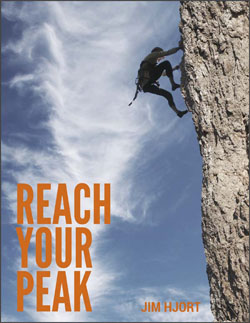Trying to Get Fit? Don't Neglect Your Mind.
/When people consider their health, they’re often concerned mostly with their physical health: exercising their body, feeding it properly, and repairing it when it breaks down.
Over the last several decades, however, scientists have gathered a great deal of evidence that our physical health is influenced significantly by what goes on in a part of our body that’s often overlooked in that process: our brain.
In fact, now we know that it’s best to consider our mind and body as a system. Mindfulness meditation is a way to exercise an often-neglected capacity of your brain and positively influence your whole-body well-being at the same time.
What’s mindfulness?
The buzz about mindfulness meditation has reached a fever pitch in recent years; Time magazine declared the existence of a “Mindful Revolution” in a cover story last year. Unfortunately, its growing popularity has been accompanied by a lot of misinformation about what mindfulness is, and isn’t.
The quality of mindfulness is one of awareness, curiosity, and acceptance of your experience of life in each moment; it doesn’t involve having a blank mind or not thinking.
Mindfulness may sound simple—and it is—but it can be difficult to practice because the human brain has the tendency to drift away into mental activities like planning, remembering, problem solving, and fantasizing even when we’d like it to stay put.
With practice, however, it becomes easier to turn toward, remain with, and accept your emerging experience of life, whatever it may be. By doing this, you’ll spend more time fully present in your life and reap a number of health benefits.
Wide-ranging benefits
Studies shows that mindfulness meditation reduces emotional reactivity and stress and increases levels of empathy, well-being, and positive emotional states. Mindfulness meditation practices have been incorporated in a wide variety of mental health applications, to help people suffering from anxiety, depression, and substance abuse, to name a few. There is even some evidence that mindfulness can help to alleviate feelings of loneliness.
Likewise, the physical health benefits of mindfulness practice are many and varied. They include lower blood pressure and levels of the stress hormone cortisol, improved immune system function, and even the physical growth of those parts of the brain associated with concentration.
Mindfulness meditation practice has also been used widely with people who experience chronic pain, and it’s been shown to alleviate physical pain by as much as 50%.
How to get started
Mindfulness meditation centers are springing up around the country, and there are also many free online sources of guided meditation (including right here on this site). However you don’t need to wait to find one of those to get started; you can start right now with a simple exercise.
Allow your eyes to close, and bring your attention to the sensations of your breath, wherever they’re most noticeable to you. Your mind will probably wander away at some point.
When this happens, just acknowledge that it has, and gently bring your awareness back to your breath. Then do the same thing again the next time.
If you can practice this way for even five or 10 minutes daily for a week or two, you should start to notice some of the benefits of mindfulness meditation. There’s a good chance you’ll even feel more relaxed after your first session.
Since mindfulness is a state of mind, it’s also readily available to you at all times, in the midst of any activity, whether that be walking, washing the dishes, or chopping onions.
The more often you can bring moments of mindfulness into your life, the more of its benefits you’ll enjoy, so give it a try as often as you can, and see what it’s like to take care of yourself from the inside out.
You might just find that taking care of your whole mind-body system complements your other efforts to lead a healthy and happy life, and unlocks a source of well-being that you may not have known existed.
You can click here to read more of my mindfulness-related articles.

















